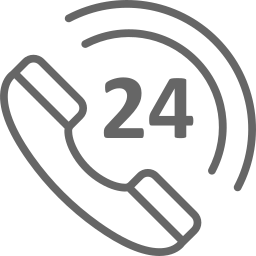Contents
Introduction.
Part A: Mental state examination.
Components of mental state examination.
Clinical symptoms examples.
Clinical scenario and use of mental state examination.
Part B: Suicide risk assessment
Components of the standard numerical risk assessment
Risk identification using numerical assessment
Advantages and disadvantages of using numerical rated risk assessment and interview-based assessment
Conclusion.
References.
Assessment of mental health of patients is a crucial step as it helps in the determination of the course of treatment, application of interventions, and decides the overall well being of the patients (Devenny & Hodges, 2017). The common ways to conduct this assessment is through the mental state examination and brief risk assessment of mental health (Mitchell, 2017). This paper has been classified into two distinct sections. Part A of this document discusses the structure and the significance of the Mental state examination for the assessment of the mental health of the individuals. The first section will list and describe the components of standard mental state examination and identify in conjunction with the clinical symptoms. Further, a clinical scenario where these components can be applied will also be studied. The second part of this document will assess the suicide risk assessment and its components and outline how a mental health professional use the information from numerical assessments to low, medium, and high-risk patients. This section will also discuss the advantages and the disadvantages of using numerically rated risk assessments and the interview formatted risk assessments for determination of the suicide risk in an individual.
The mental state examination is defined as a structured method to observe and describe the current status of the mind of the patient and assesses in the holistic terms of appearance, attitude, mood, thought process, speech, behaviour, cognition, perceptions, thought content, and insights.
The first component of mental state examination is the appearance. The appearance of the patient is used to assess and identify the clues that are associated with their lifestyle and the ability to self-care. The purpose of the clinician is to record the presence of any distinctive features, clothing, posture or gait of the patient, grooming and hygiene, and look for evidence of self-harm. The second component of the mental state examination is behaviour. The non-verbal communication is used to derive insights regarding the mental state of the patient. Eye contact, facial expression, and psychomotor activity of the patient are noted. Body language, level of arousal, and the ability to follow requests are also acknowledged. Rapport and engagement are provided critical attention in this segment. The third component is the speech where the rate of speech, that is, if it is pressured or slowed, is identified. The quantity of speech and the tone of speech is also noted.
The volume of speech, that is, if the person is talking loudly or softly, and the fluency and rhythm are provided critical attention. The next components are assessment of mood and affect. The components, mood and affect are associated with the emotion of the patient. Affect is an immediately expressed emotion whereas, the mood is the sustained emotion. Based on this, the range of affect and the intensity of the affect is analyzed. The next component of mental state examination is the form, content, and possession of thoughts that help in the determination of the thinking process of the patient and helps in achieving critical insights. The next component is the perception to assess the incidence of hallucinations, delusions, or pseudo-hallucinations in the patient. Followed by this, the next component is of cognition, that focuses on the orientation, attention, and memory of the patient. The final component of mental state examination focuses on insights and judgments of the patient.
A clinical symptom is defined as is objective evidence of disease in the patient that is validated through a clinical observation (Joyce et al., 2017). Some common clinical manifestations that are associated with mental health include a feeling of sadness, withdrawal, anxiety, sleep apnea, and hallucinations. Sadness is one of the common feelings that are experienced by individuals that suffer from chronic mental health conditions like depression, schizophrenia, and bipolar disorders (Petrie et al., 2019). However, it is critical to consider how sadness is an independent feeling that is often but necessarily associated with mental health conditions. Sadness is largely associated with mood disorders like depression as it causes distressing symptoms of how one feels and perceives the environment around self (Aung et al., 2017).
Emotional withdrawal is also a common symptom that is experienced by the patients that suffer from mental illness. Withdrawal in mental illness results in limited-expression and realization of emotions and of people. This may arise due to fear or anticipation of any form of rejection or also because of deluded beliefs or past experiences. Other common clinical symptoms include hallucinations (Mitchell, 2017). A hallucination is an experience that involves the apparent perception of something that is not present in the surrounding or environment. Hallucinations are common in patients with severe mental illnesses with psychotic mental illnesses (Devenny & Hodges, 2017). The patients may also present with delusions where an idiosyncratic belief or an impression may be maintained in the patients. Other clinical symptoms may also be present in patients based on illness, intensity, and individualistic experiences (Petrie et al., 2019).
To address the patient for the first time while dealing with the patient with schizophrenia. The clinician must introduce himself/herself with the patient and the patient details must be confirmed. The clinician must observe the appearance of the patient through the application of mental state examination and not any anomalies associated with patient health. Clothing, posture, and hygiene of the patient are carefully noted and any discrepancies associated with the same are carefully noted. The clinician must also observe the behaviour of the patient. The patient's non-verbal communication is carefully noted and eye contact is maintained with the patient. Facial expressions are noted in the course of conversation. Body language and mannerisms of the patient are also noted. In the given scenario, while observing the body language and the facial expressions of the patient. It was noted that the patient tended to twitch her lip in the course of conversation. The patient was also non-compliant to follow the requests and presented with extreme signs of agitation and aggression to the pre-identified triggers. The speech of the patient was pressured with the minimal response being reported and tremulous speech.
The volume of the speech of the patient was loud with a slurred fluency. Questions were probed for mood and affect of the patient. The patient was asked "How are you feeling?", "Have you been feeling low or anxious lately?" The patient responded to being anxious and feeling constantly agitated. The range of the effect in the patient was observed to be expansive with labile fluctuations in the affect. The patient experienced incoherent thoughts and also had preservation in ideas. A repetitive response was observed for certain triggers. Thoughts and contents of the brain of the patient were also screened by asking probing questions like, “Are there any thoughts you have a hard time getting out of your head?” and “Do you think anyone is trying to harm you?”. Perceptions associated with the patient were also tested. Hallucinations were found to be present where the patient accepted to be hearing voices and looking shadows, the patient also had illusions where misinterpretation of perceptions was observed. The cognition of the patient was also assessed. Basic testing of cognition revealed that the patient had limited attention and concentration.
The orientation of the patient was also not accurate. It is suggested that a mini-mental state exam is conducted further for the detailed examination. Insights and judgments of the patient seemed to be impaired as they failed to acknowledge the health problem and did not think it was in any form differing from the perceived normal. The problem-solving ability and judgment of the patient were also compromised. After the complete examination and mental state examination, the patient was thanked and the findings were coherently summarized.
Suicide risk assessment is a crucial skill for mental health clinicians and is approached as a systematic approach to ensure the well being of the patient by identification of initial cues and provide help to the patient (Kene et al., 2019).
The components of brief risk assessment for suicide risk assessment include noting the episode of harm and the method of harm involved. The historical components of suicidality are identified. Both static and dynamic risk factors are included. The static components associated with the suicidal risk include previous attempts of self-harm, previous serious attempt, family history of the suicide, major psychiatric diagnosis are noted. Social factors like physical disability and illnesses and social factors like loss of a job and relationship status are also determined. The dynamic components of the risk assessment include expression of the suicidal ideas in the individual, intent identification is identified. Signs with a high level of distress are identified along with perceived loss and hopelessness in the patient. Recent significant life impacts are noted with the current incidence of misuse of drugs and alcohol.
The level of suicide risk is determined through the scoring of risk. Risks of violence are also calculated for the brief risk assessment. Static factors that are scored for the assessment include recent incidences of violence, use of weapons, with factors like age and sex of the patient. The criminal history of the patient is scored and previous acts of danger are also contemplated. Incidence of childhood abuse also serves as a crucial component of the numerical risk assessment. History of drug and alcohol use are also identified and marked. The static factors that are used for numerical assessment. Dynamic factors that are used for numerical assessment of the violence include expression of intent, access to the available means and the idealisation of violence is also scored. Another crucial component that is required included. Scoring of preoccupation with violent ideas is noted and marking for inappropriate sexual behaviour is also done. reduced ability to restraint and self-control are also evaluated with a record of the current use of drug and alcohol abuse. Protective factors for both, risk of violence as well as the risk of suicide are noted and identified. Allied risk factors are also noted for determination of the risk factors.
The identification of the risk is done through cumulative assessment of the scores the suicidality is calculated with both static as well as dynamic factors. Static factors and dynamic factors are counted. If an individual possesses the characteristics described by the component of the assessment, a score of one is added to the total assessment, if the characteristic is absent in the individual, the person is marked zero. If the characteristic detail is ambiguous, the individual is marked as "not known". If the total score of the individual is below seven, the patient is considered to be at low risk of suicidal tendency. If a score between the range of seven to fourteen is obtained, the patient is considered to be at moderate risk of suicide. If a score higher than fourteen is obtained, the patient is considered to be at high risk of suicidality. Similarly, the level of violence risk is obtained with a cumulative score obtained by analysis. If the score is below seven, the risk of violence is low, a moderate risk is perceived with a score of seven to fourteen and a high risk of the score above fourteen indicates a high risk of violence by an individual. However, the final assessment is inclusive of protective factors identified in conjunction with the risk factors for the overall assessment of the patient.
Suicide risk assessment tools are of prime significance as they help in early identification of the hazards and thus help in preventing the loss by application of suitable interventions. Risk and protective factors play an essential role in the prevention of suicide in terms of both individuals as well as communities. The risk factors help in the identification of initial cues and thus limit the risk of loss (Thom et al., 2020). The numerical assessment provides significant benefits for the assessment of suicide risk in the individuals. Numerical assessment of the suicide risks is objective and highly beneficial. Objective scoring in the numerical assessment is also beneficial as it helps in the classification of patients into low risk, moderate risk and the high-risk individuals (Kene et al., 2019). Numerical assessment is also beneficial in the community as well as an individual assessment of suicide risk s it helps in the availability of quantitative data for the assessment of risks. However, numerical assessment tools also have several limitations. First, numerical risk assessment tools may not be able to provide an in-depth analysis of the patient experience and the well being of the patient.
The numerical risk assessment does not include the effect of secondary factors that may play a role in suicide risk development (Ng et al., 2017). The clinicians do not have the chance to probe the client for further discussions and get a detailed insight. These limitations are met through interview-based analysis that provides a risk assessment for the suicidal individuals. Interview based assessments are beneficial as the clinician possesses the ability to discuss the questions in detail. The clinician also has the liberty to identifies and signs through probing and recording the detailed qualitative data with in-depth analysis (Thom et al., 2020). The interview-based assessments are therefore more suitable for risk assessment of the individuals than of the communities as they are more time consuming and descriptive in nature than the numerical assessments (Oquendo & Bernanke, 2017).
However, characterization of the suicide risk of an individual in the interview based assessments can be more subjective and result in intentional or unintentional biases. In-person interviews for suicide assessment also help in the determination of cues from the body language of the patient, recording of specifically identified undertones of discussion, and through enhanced communication with the patient that encourages rapport building and thus cultures free communication. However, limitations of interview formatted suicide assessments include, chances of high subjectivity, increased consumption of time, and in certain cases, derivation of unclassified or ambiguous results that maybe not highly conclusive (Oquendo & Bernanke, 2017).
This paper identifies the different forms of medical health assessment tools and provides a detailed analysis of its components to discuss their application in a clinical scenario. The document has been classified into two sections. The first section of this document briefs about the components of the mental state examination. The ten components of mental state examination are defined in this section with the definition of common clinical symptoms that are presented by patients with severe mental illnesses. This section also provides details to a clinical scenario where the mental state examination was applied to a patient for the derivation of the state of mental health. The second section of this document is focused on suicide risk assessment tools and identifies the components of the standard suicide risk assessment tools. The means of determination of the low, medium and high risk of suicide indices in an individual are also discussed. Advantages and the disadvantages of using numerical risk assessment tools for suicide indication and interview-based descriptive tools have also been explained in an evidence-based, succinct manner in this document.
Aung, M. H., Matthews, M., & Choudhury, T. (2017). Sensing behavioural symptoms of mental health and delivering personalized interventions using mobile technologies. Depression and Anxiety, 34(7), 603-609. https://onlinelibrary.wiley.com/doi/abs/10.1002/da.22646
Devenney, E., & Hodges, J. R. (2017). The mini-mental state examination: Pitfalls and limitations. Practical Neurology, 17(1), 79-80. https://pn.bmj.com/content/17/1/79?papetoc=&utm_source=TrendMD&utm_medium=cpc&utm_campaign=Practical_Neurology_TrendMD-1
Joyce, S., Modini, M., Christensen, H., Mykletun, A., Bryant, R., Mitchell, P. B., & Harvey, S. B. (2016). Workplace interventions for common mental disorders: A systematic meta-review. Psychological Medicine, 46(4), 683-697. https://www.cambridge.org/core/journals/psychological-medicine/article/workplace-interventions-for-common-mental-disorders-a-systematic-metareview/2AD6672BE73FB23B329DC9EED4E11985
Kene, P., Yee, E. T., & Gimmestad, K. D. (2019). Suicide assessment and treatment: Gaps between theory, research, and practice. Death Studies, 43(3), 164-172. https://www.tandfonline.com/doi/abs/10.1080/07481187.2018.1440034
Mitchell, A. J. (2017). The mini-mental state examination (MMSE): Update on its diagnostic accuracy and clinical utility for cognitive disorders. In Cognitive screening instruments (pp. 37-48). USA: Springer, Cham. https://link.springer.com/chapter/10.1007/978-3-319-44775-9_3
Ng, C. W. M., How, C. H., & Ng, Y. P. (2017). Depression in primary care: Assessing suicide risk. Singapore Medical Journal, 58(2), 72. https://www.ncbi.nlm.nih.gov/pmc/articles/PMC5311887/
Oquendo, M. A., & Bernanke, J. A. (2017). Suicide risk assessment: Tools and challenges. World Psychiatry, 16(1), 28. https://www.ncbi.nlm.nih.gov/pmc/articles/PMC5269494/
Petrie, K., Crawford, J., Baker, S. T., Dean, K., Robinson, J., Veness, B. G., ... & Harvey, S. B. (2019). Interventions to reduce symptoms of common mental disorders and suicidal ideation in physicians: A systematic review and meta-analysis. The Lancet Psychiatry, 6(3), 225-234. https://www.sciencedirect.com/science/article/pii/S2215036618305091
Thom, R., Hogan, C., & Hazen, E. (2020). Suicide risk screening in the hospital setting: A review of brief validated tools. Psychosomatics, 61(1), 1-7. https://www.sciencedirect.com/science/article/pii/S0033318219301872
Remember, at the center of any academic work, lies clarity and evidence. Should you need further assistance, do look up to our Nursing Assignment Help.
Related reads you can't miss:
Dual Diagnosis of Mental Health Assignment Sample
How To Tackle Social Inequalities and Mental Health Problems?

Get 24x7 instant assistance whenever you need.

Get affordable prices for your every assignment.

Assure you to deliver the assignment before the deadline

Get Plagiarism and AI content free Assignment

Get direct communication with experts immediately.
Secure Your Assignments
Just $10
Pay the rest on delivery*

It's Time To Find The Right Expert to Prepare Your Assignment!
Do not let assignment submission deadlines stress you out. Explore our professional assignment writing services with competitive rates today!
Secure Your Assignment!